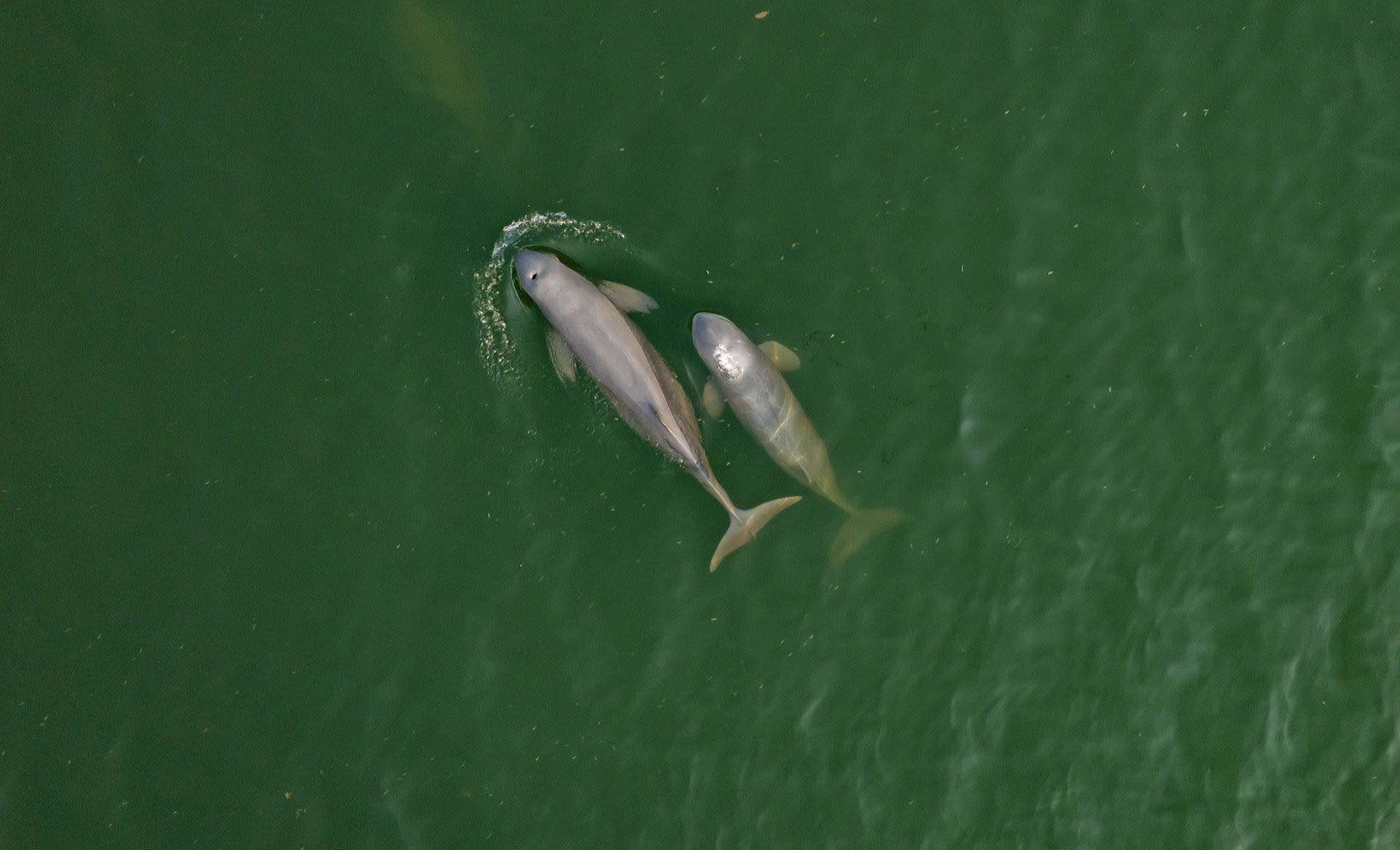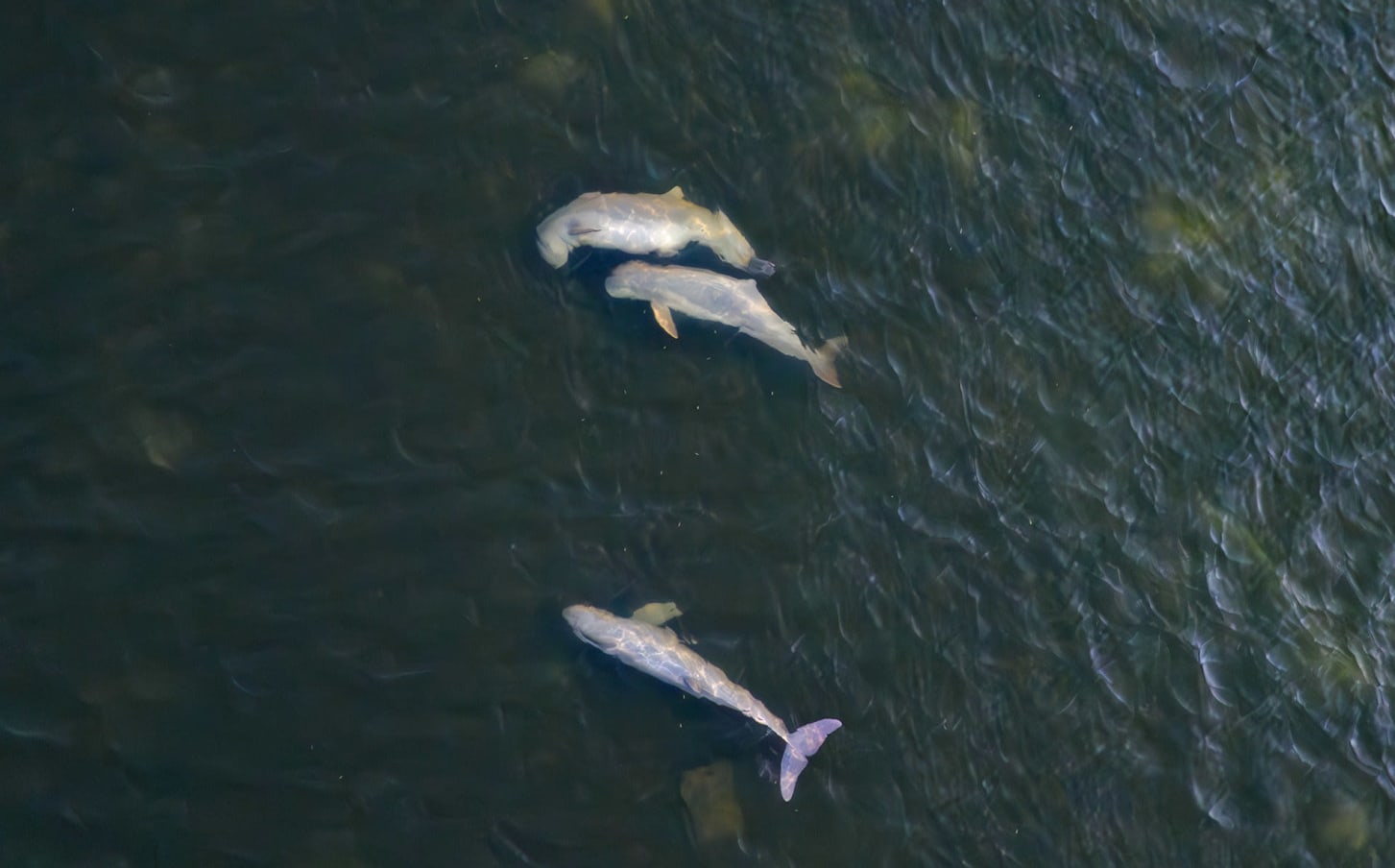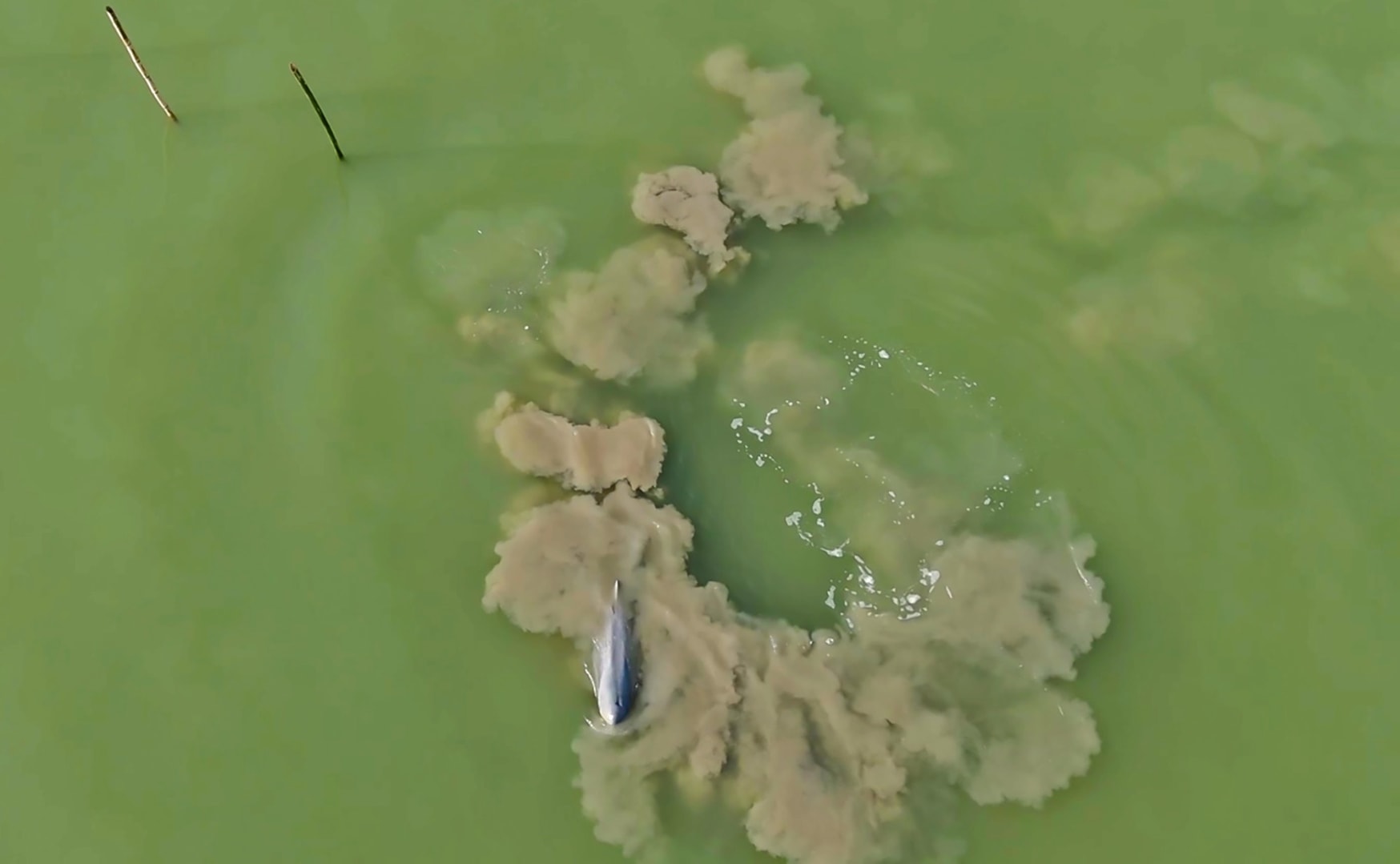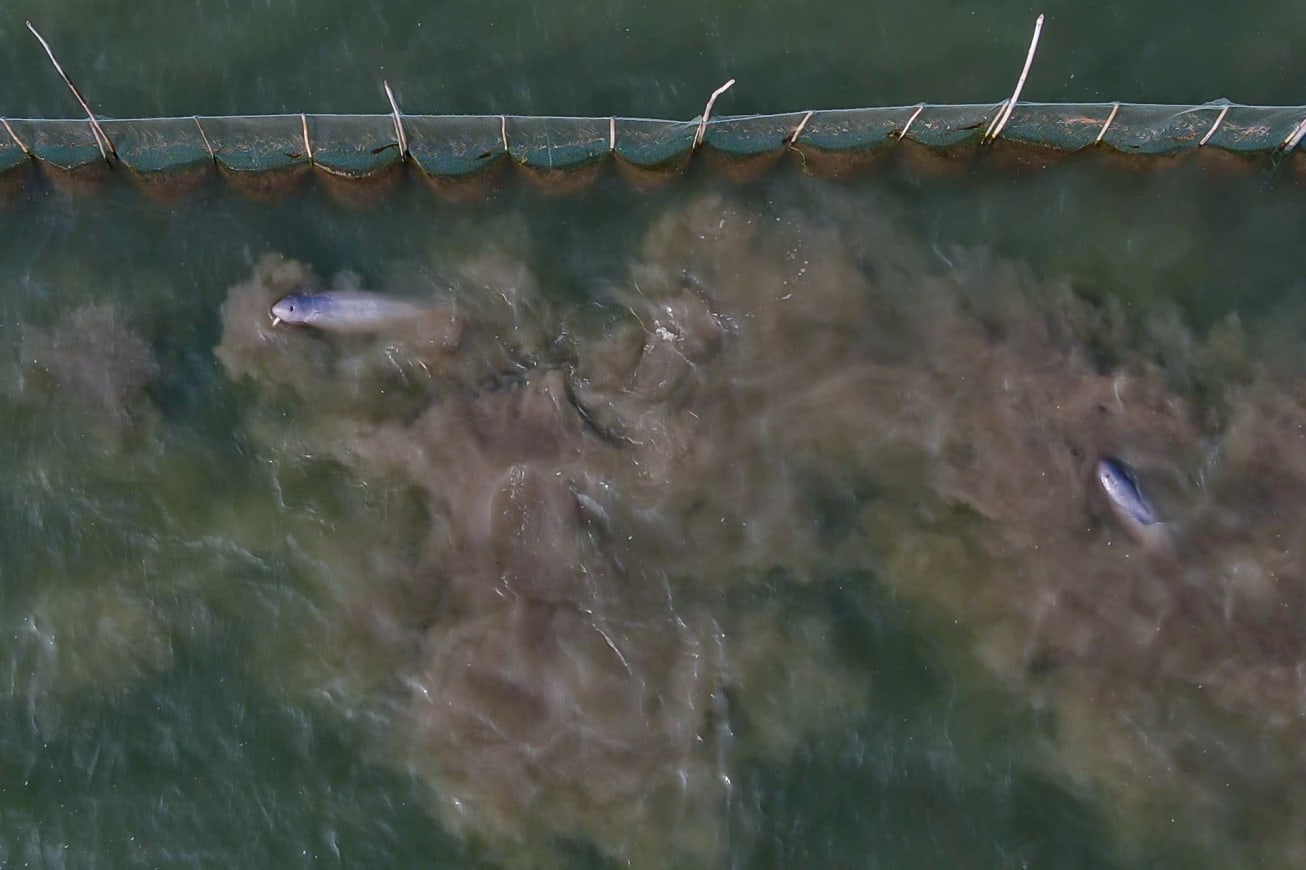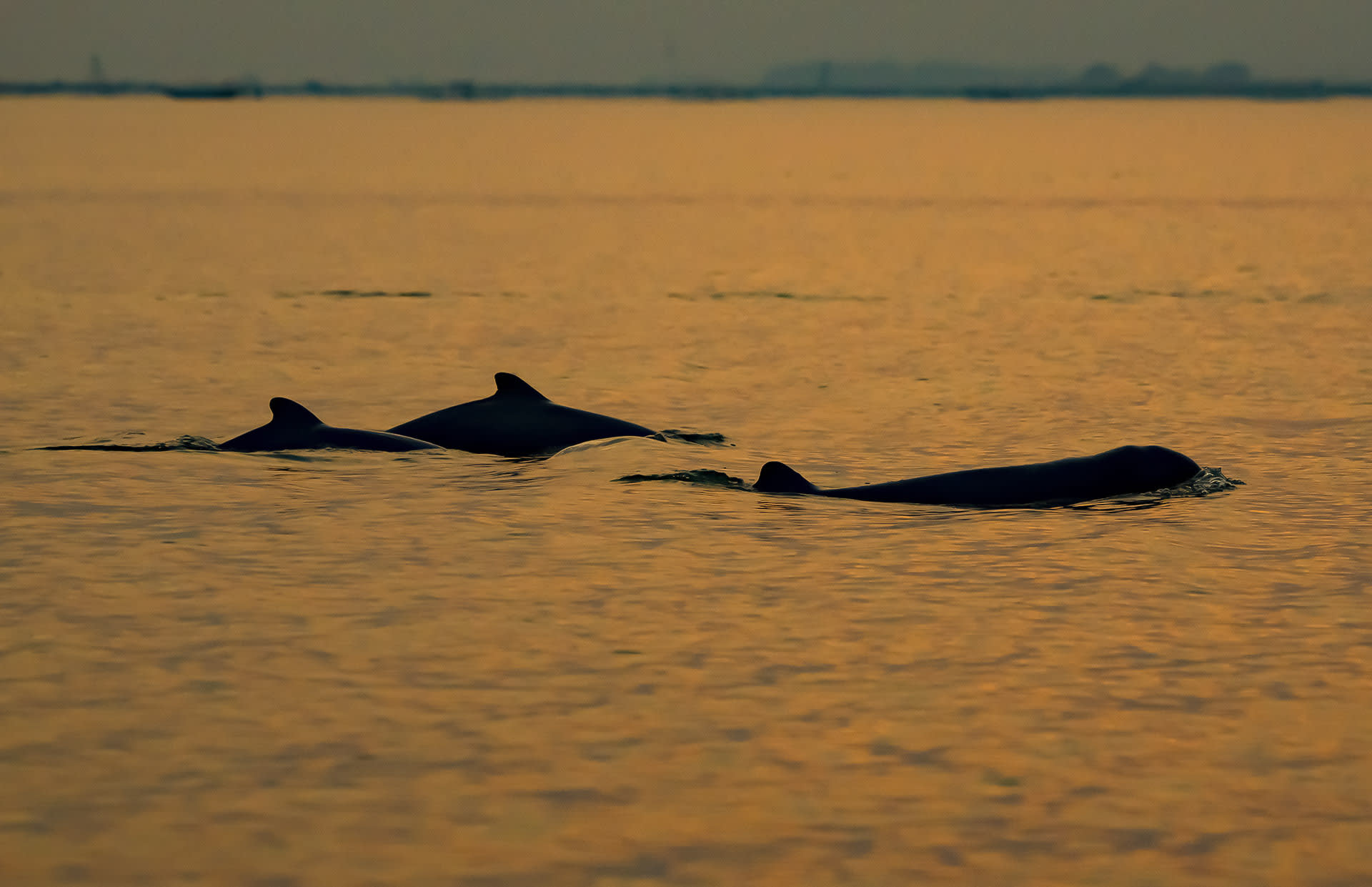 Listen to this article
•
15:34 min
Listen to this article
•
15:34 min
A strange, indescribable drumming sound in the distance drew our attention. When I asked the boatman about it, he casually replied, “Sahib, it’s from the tourist boats. Look over there, beyond the long, narrow island.” Intrigued, I asked, “Why are there so many boats?” His response brought to light the reality of the booming Irrawaddy dolphin tourism industry in Chilika Lagoon.
I was accompanying the renowned wildlife photographer Dhritiman Mukherjee, and we were travelling in the boat of Lipu, his trusted aide in Chilika. After spending the night at the Satapada Guest House, we set off early (6 am) to reach the jetty. Lipu was already waiting, ready to take us to the Irrawaddy dolphin (Orcaella brevirostris) habitat before the commercial ferries shattered the morning’s tranquillity. It was a crisp winter morning, January 7, 2025, and a slight chill lingered in the air. Within just one nautical mile (1.85 km), we spotted our first Irrawaddy dolphin. Though it wasn’t a “lifer” (first sighting) for me — I had previously seen them near the renowned Nalbana Island Bird Sanctuary in Chilika — every encounter with these enigmatic aquatic creatures remains unforgettable.
Irrawaddy dolphins thrive in coastal, estuarine, and freshwater ecosystems across South and Southeast Asia — in India, Bangladesh, Myanmar, Cambodia and the Philippines. In India, they are found only in Odisha’s Chilika Lagoon and the Sundarbans. Chilika, in fact, supports the largest population of these dolphins in India. They feed on fish, squid and octopus. In several places these intelligent mammals have been observed using a range of fishing tactics, including blowing bubbles, pushing prey towards shallow waters, and even cooperatively herding fish into the nets of local fishers. Unfortunately, due to habitat loss, pollution and dynamite fishing, the species has been declared Endangered by the IUCN.
Dhritiman, having spent years observing and photographing Irrawaddy dolphins, has an exceptional understanding of their behaviour. While he is widely celebrated as one of the finest wildlife photographers, few recognise that he is also a keen naturalist and meticulous observer. His patience in studying his subjects for hours or even days before capturing them is the secret behind his striking natural images.
Globally, there are 49 species of dolphins and porpoises, most of which inhabit marine environments. India is home to three species of riverine dolphins: the Gangetic dolphin (Platanista gangetica), found in the Ganga and Brahmaputra river systems; the Sind dolphin (Platanista minor), with a small, recently discovered population in Punjab’s Beas River (the majority reside in Pakistan’s Sind River); and the Irrawaddy dolphin (Orcaella brevirostris). While the first two species are strictly freshwater dwellers, the Irrawaddy dolphin thrives in brackish and saline waters from eastern India to Myanmar, Indonesia, and other Southeast Asian countries like Laos and Cambodia.
Like most dolphins, Irrawaddy dolphins are highly social creatures, living in groups called pods. Dolphins give birth to live calves and nurse them with highly nutritious, fatty milk that allows them to grow rapidly. In a pod, individuals of all age groups coexist, with younger dolphins learning hunting techniques from adults. They often remain with the group for 5 to 10 years.
They move, hunt, and play together, communicating through echolocation — emitting sound waves to detect unseen objects, such as fish, by analysing the returning echoes. Dolphins create a mental map of their surroundings through echolocation, identifying underwater natural features They move, hunt, and play together, communicating through echolocation — emitting sound waves to detect unseen objects, such as fish, by analysing the returning echoes. and even man-made structures. Irrawaddy dolphins rely heavily on echolocation when hunting alone or in smaller pods, especially in murky waters. However, their abilities are not foolproof; they struggle to detect thin nylon fishing nets, leading to frequent entanglement and fatalities.
Due to their high metabolism and active lifestyle, dolphins consume up to 10 per cent of their body weight in food daily. When a pod locates a school of fish, they encircle their prey and release clouds of bubbles to confuse and disorient the fish, making it easier to catch them.
During our observations, we witnessed this behaviour twice. Initially, I assumed the bubbles were caused by water churning due to the pod’s movement. However, Dhritiman’s drone-captured images clearly show dolphins intentionally creating these “bubble nets”. At times, they also drive fish into shallow waters, making them easier to capture.
In Chilika, Irrawaddy dolphins forage for fish — much of this involves herding fish towards fixed stake nets set up by local fishers. These nets act as barriers that the dolphins use to trap and catch fish more efficiently. Fishers also benefit since they manage to catch a larger bounty.
Researchers have observed similar behaviour in their namesake river, Myanmar’s Ayeyarwady (Irrawaddy), where Irrawaddy dolphins engage in cooperative fishing with local fishermen. They herd fish toward the nets, sometimes even signalling to the fishermen by splashing their tails or bobbing their heads to indicate the perfect moment to cast their nets. In return, the dolphins feed on the escaping or stunned fish.
Dolphins are known for their intelligence, and Irrawaddy dolphins are no exception. However, very few researchers have done dedicated studies on the dolphins. Studying dolphins is inherently challenging due to their aquatic nature, especially in murky waters. They surface for air every 10–20 minutes, and unlike their marine counterparts, famous for acrobatic leaps and hence favourites in dolphinariums, freshwater dolphins rarely breach the surface, except perhaps when they are young. This explains the scarcity of clear photographs capturing Gangetic or Irrawaddy dolphins fully out of the water unless they are stranded on shore. Occasionally, the dolphins raise their heads above water to breathe and take in their surroundings.

Conducting a dolphin population census is difficult. One cannot predict where and when a dolphin will surface nor distinguish whether the same individual is appearing again or a different one. Nevertheless, the Odisha Forest Department conducts an annual Irrawaddy dolphin survey with the help of staff and volunteers. In the most recent census in the state, conducted from January 27-29, 2025, approximately 190 Irrawaddy dolphins were recorded.
Dipani Sutaria, Adjunct Research Fellow, School of Earth and Environmental Sciences, James Cook University, Townsville, Queensland, Australia, has extensively studied Chilika’s Irrawaddy dolphins and the dolphin-watching industry.
Dolphins are an intriguing group of aquatic animals. Yet, witnessing the booming, often unregulated dolphin tourism in Chilika reminded me of the unchecked tiger tourism in some of our reserves. Except that instead of safari jeeps, we have boats in Chilika, and when an Irrawaddy dolphin is spotted, the frenzy is just as chaotic.
Dhritiman was documenting the dolphins’ natural behaviour — from foraging to playful interactions — using a drone camera hovering 10–15 metres above the water while our boat maintained a respectful distance of 150–250 metres away. This experience left me pondering: Can we establish strict protocols for tourists, boat operators, photographers, and visitors to ensure these intelligent, sentient creatures can live undisturbed? Surely, they deserve a peaceful existence in their own waters?



